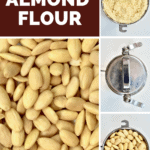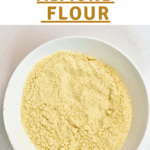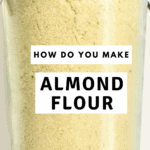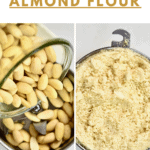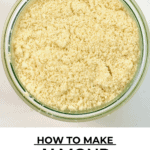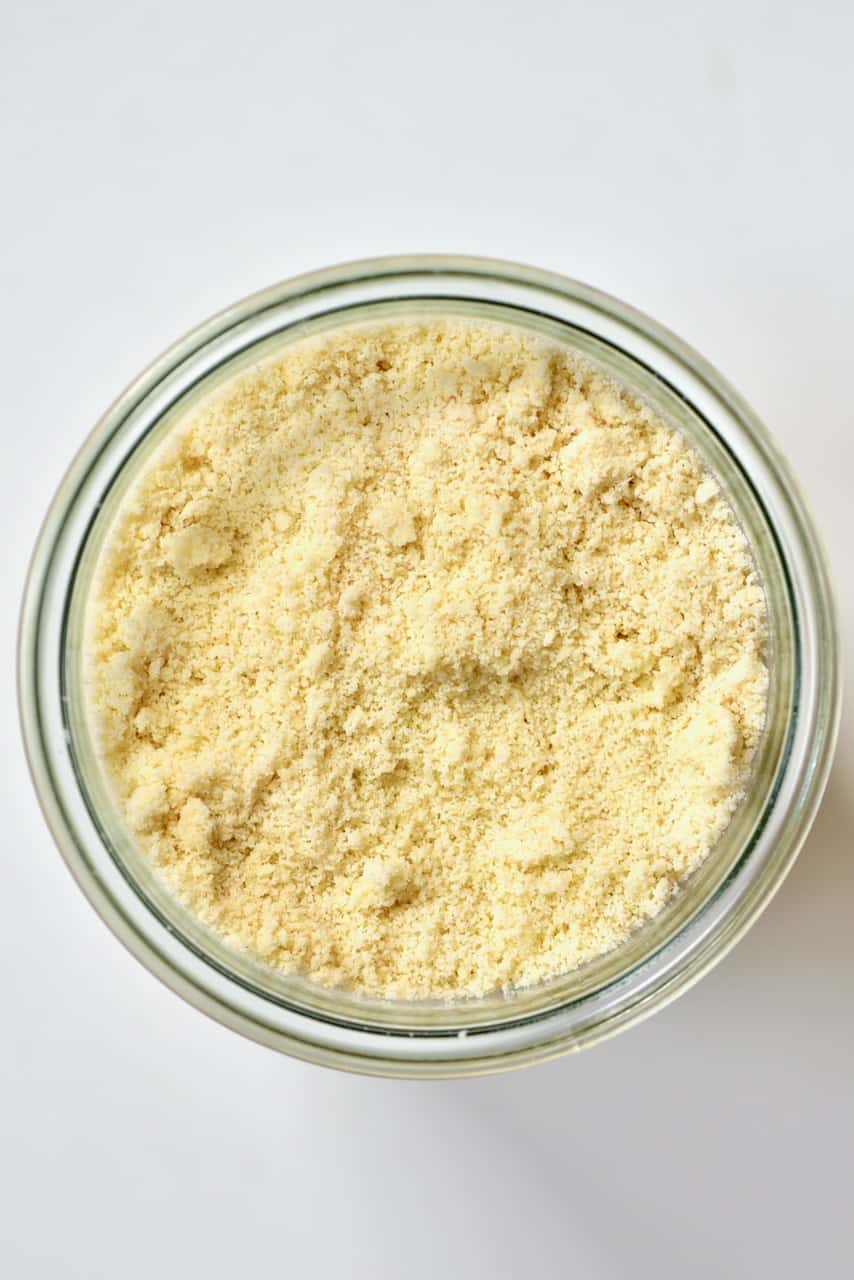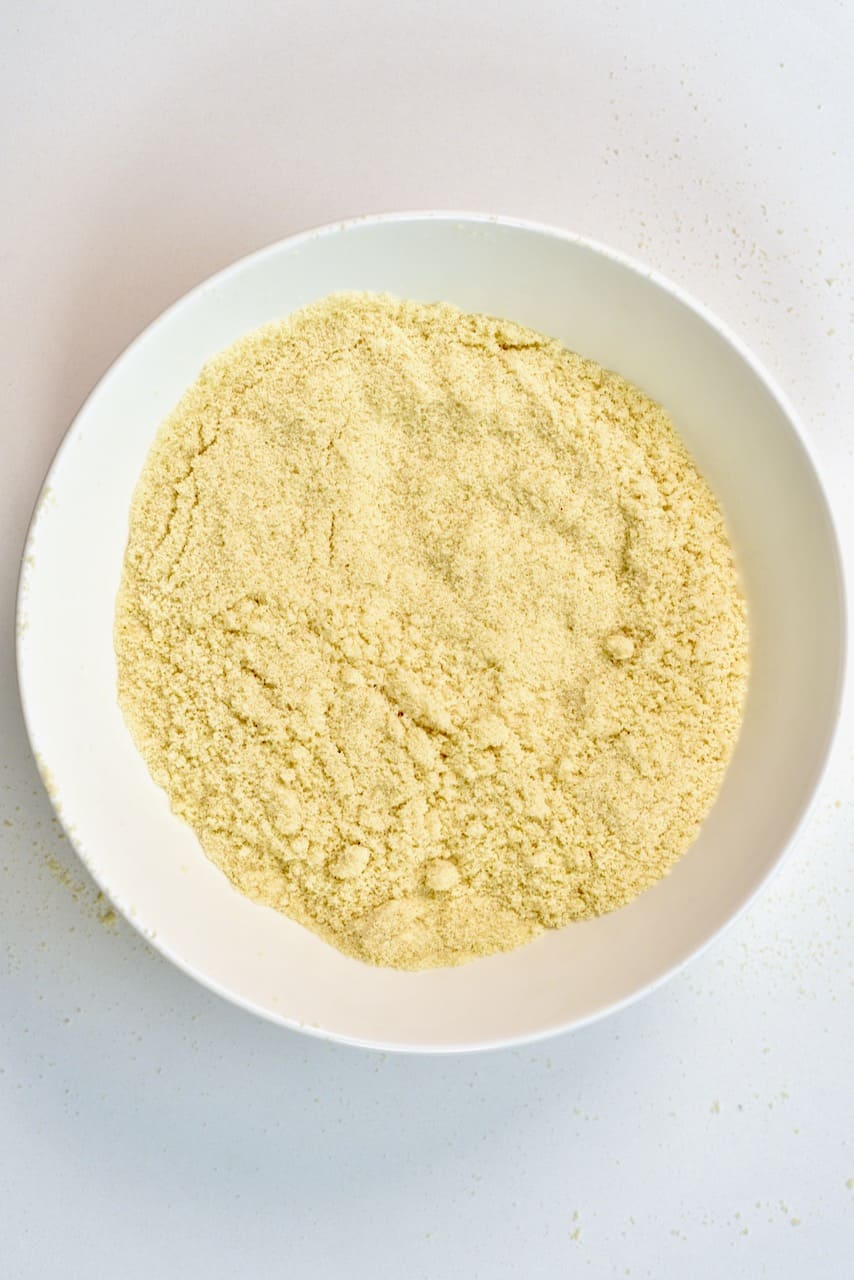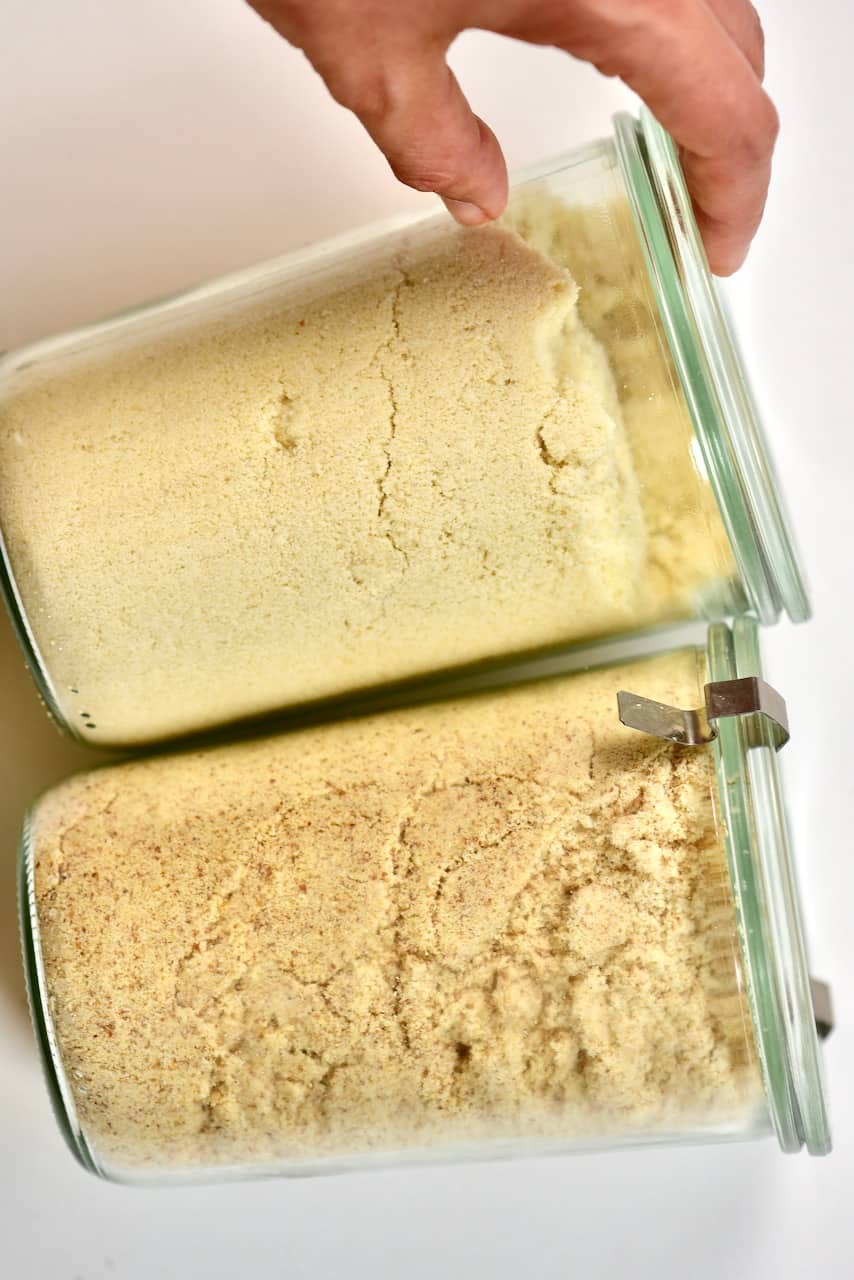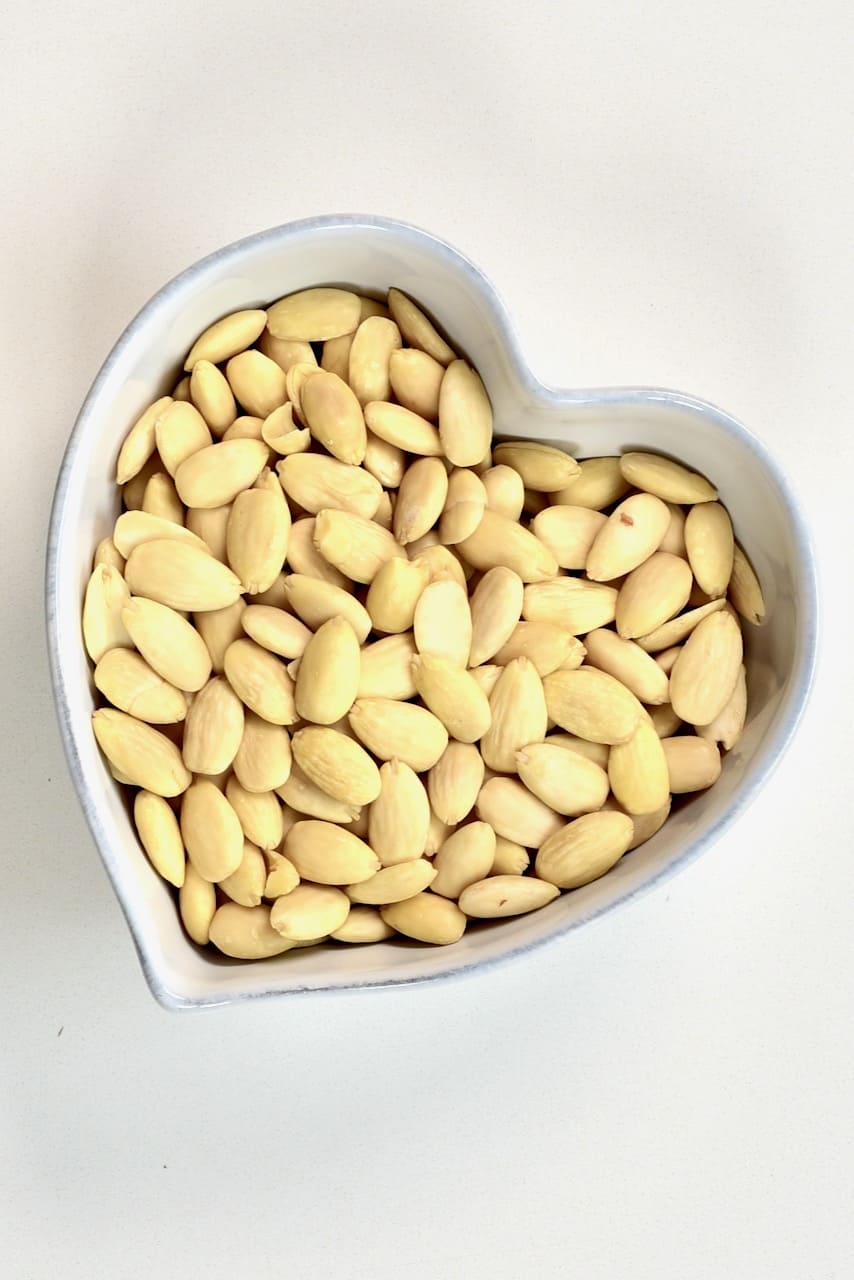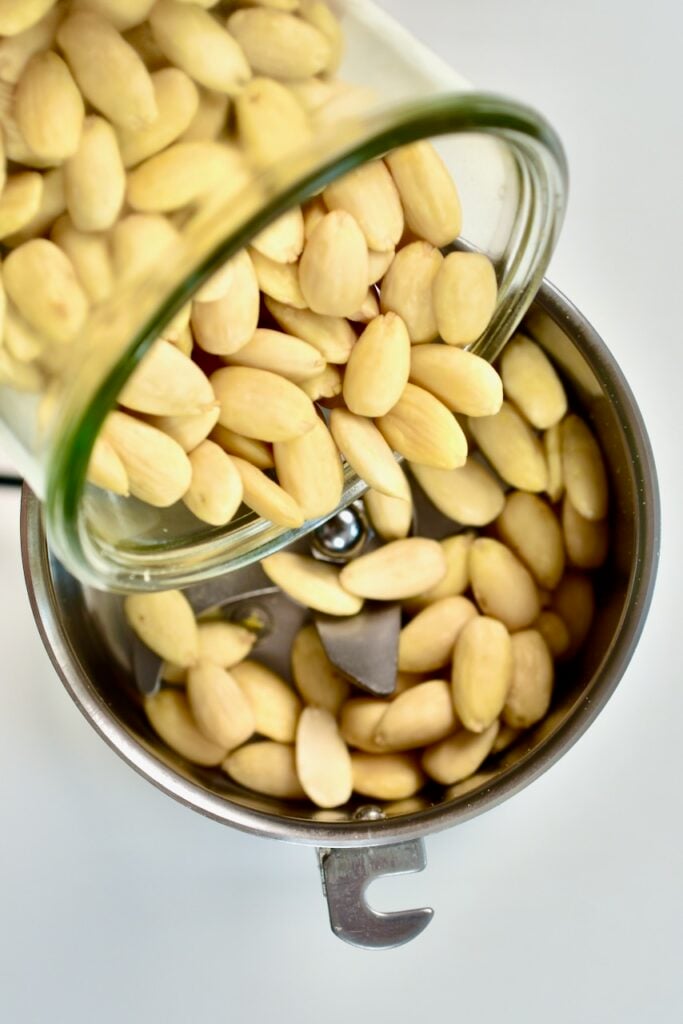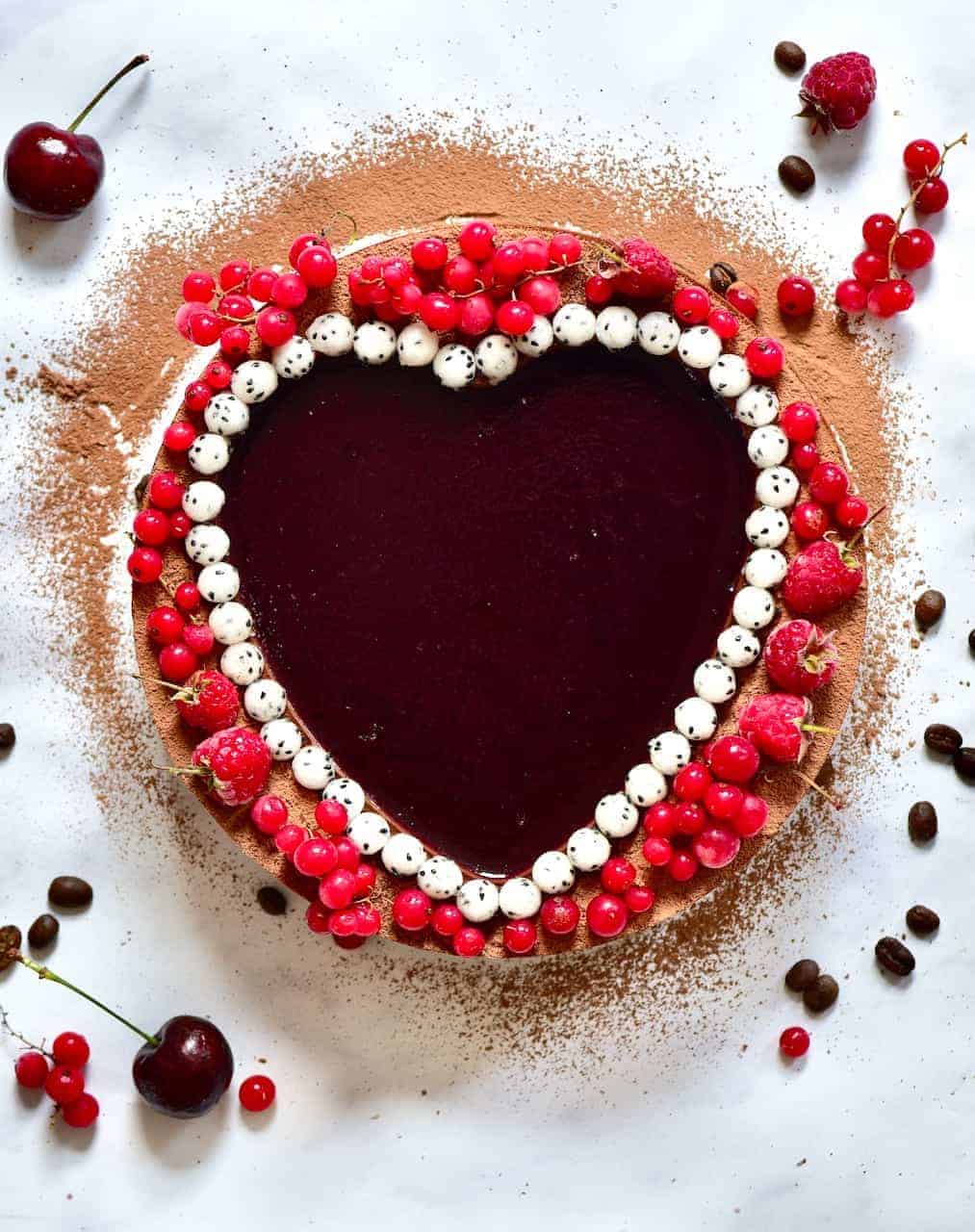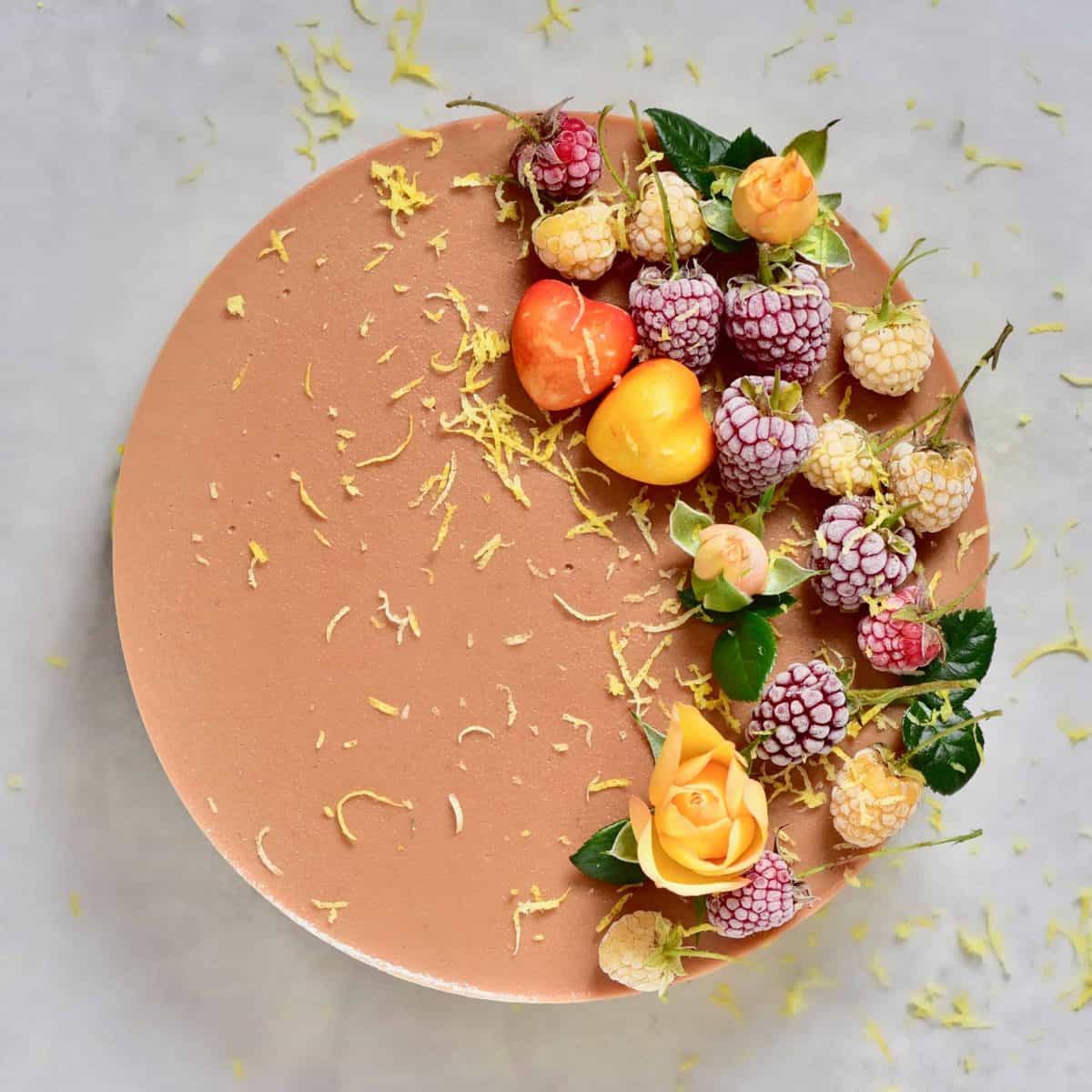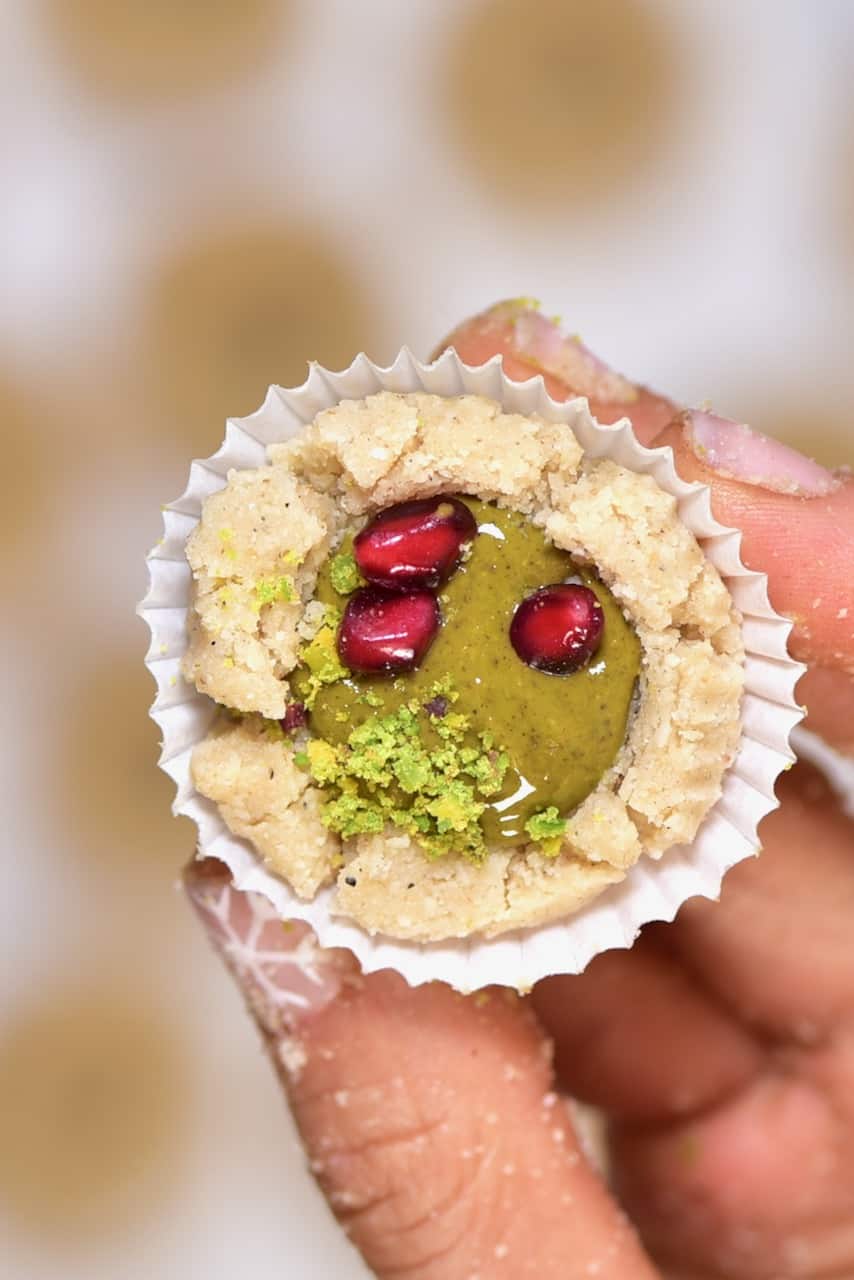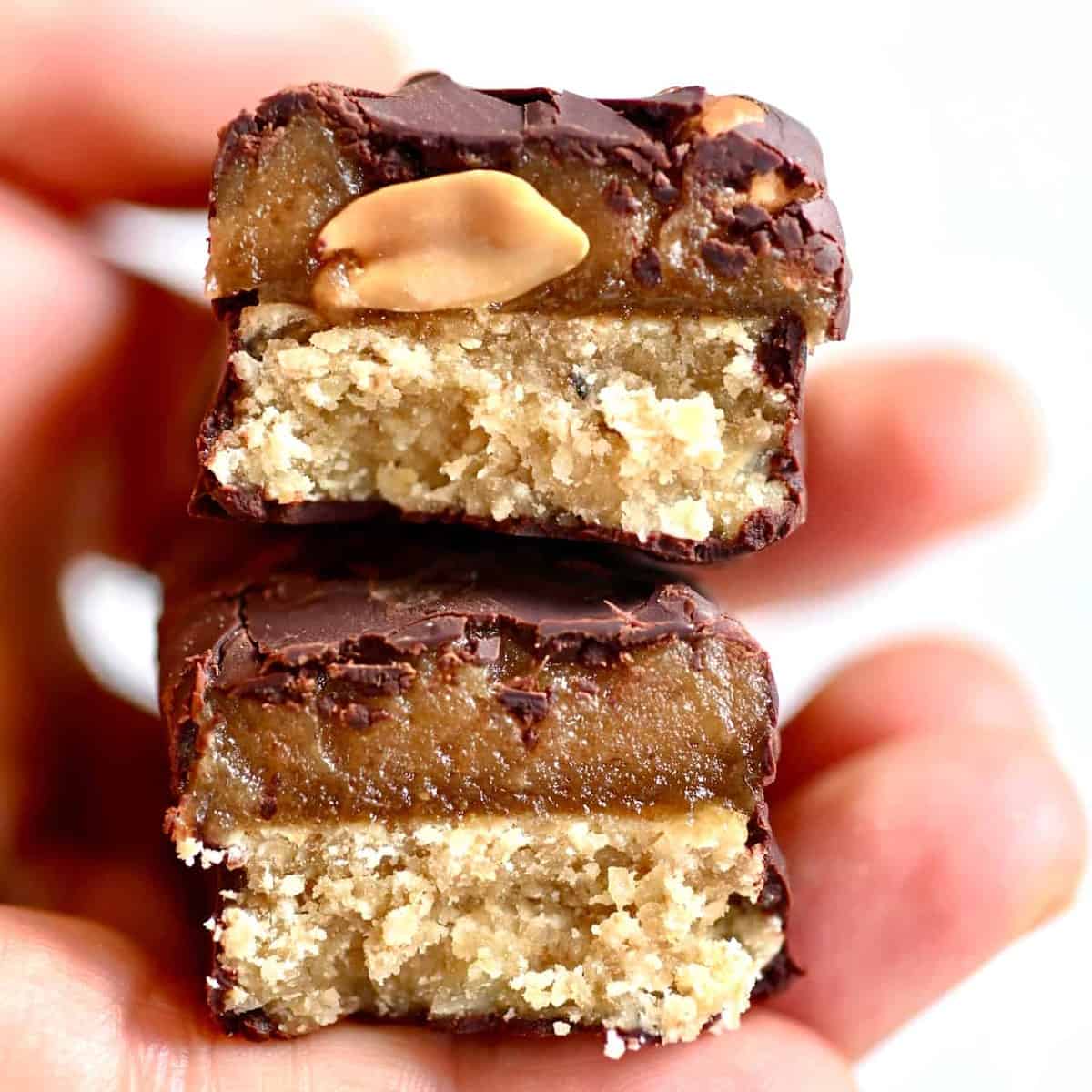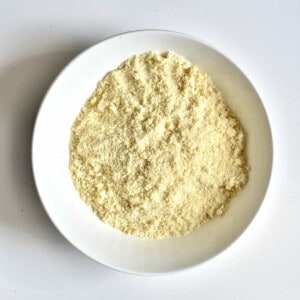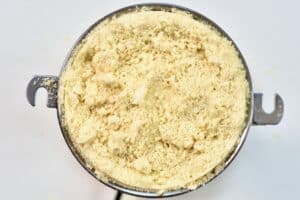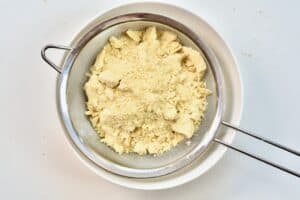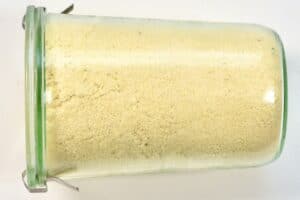Learning how to make almond flour is super simple. All you need is a single ingredient, a high-speed blender, and a few minutes of your time. The resulting blanched almond flour can be used in tons of recipes and fits a variety of dietary needs. This includes being naturally gluten-free, paleo, and keto. Plus, making this ingredient at home can work out far more cost-effective than purchasing store-bought almond flour repeatedly. I also find that it tastes fresher too!
What Is Almond Flour (& is almond flour gluten-free?)
Almond flour can be made in a couple of ways. However, it is usually blanched almonds that are ground down into a fine flour-like powder. This flour is gluten-free, Paleo, Keto, Whole30, and low-carb – so super dietary restriction friendly. In stores, it’s often labeled in a variety of ways, including almond flour, ground almonds, almond powder, almond meal (although we’ll discuss how that’s different below). Almonds have a variety of health benefits, including containing a variety of minerals, vitamins, and phytonutrients that help regulate blood sugar levels and reduce hunger pangs. As well as that, they are also packed with healthy fats and antioxidants. This makes them a great flour alternative and addition to your baked goods. As an all-purpose flour substitute, almond flour can’t be used at a 1:1 ratio in all circumstances – this is something you’ll have to experiment with over time if recipes don’t state sub amounts. However, it is still an excellent flour alternative, making for moist, slightly denser, and nutty baked goods. It is also the base of a number of popular desserts, including macarons, cherry Bakewell tarts, and more.
Is Almond Meal The Same As Almond Flour
I touch on this in my Almond Meal DIY – the answer is no. While they are both made from the same ingredient and practically the same process, the almond meal uses raw almonds (unpeeled). The resulting powdery substance has a different color and slightly different texture. Almond flour is the most refined of the flour vs. meal vs. pulp (leftovers from the almond milk process) and best used for baked goods where you want it to blend in more, be refined, and not have any ‘gritty’ almond texture.
How To Make Almond Flour
The process for making almond flour is almost identical to almond meal. However, the main difference is that before you grind the almonds, they need to be blanched and peeled as we don’t want the almond skins for this DIY. You can also buy already blanched almonds. However, this will once again bump up the price. It’s a super simple process to do this at home so, why not. You can follow the simple process of blanching almonds here. Once ready, the almonds just need to be placed into a high-speed blender and ground into a fine powder. There’s a little more to it than that, though, so read the recipe card below for the full details and notes. I’ve also included notes on making this with a coffee grinder too. The key is to pulse the mixture, so you don’t end up with almond butter.
Recipes & Uses
I have a variety of almond flour recipes here on the blog, including; For crusts: As well as using it as a gluten-free alternative for regular pie crusts, I have a variety of tarts using a raw vegan tart base. i.e., Vegan Red Wine and Mocha Tart Recipe, Vegan Earl Grey Blueberry Tart, or this Two-layer Raspberry Peach & Lemon Tart. For Cookies & Cakes: There are tons and tons of ways to include this ingredient in your cookies and cakes. I have a few options here on the blog, including these Almond Pistachio Thumbprint Cookies Recipe, and Simple Gluten-Free Banana Bread Recipe. Candy Bars: For example, in these healthier vegan versions of popular candy bars. i.e., these Healthier Homemade snickers Bars (Vegan) and Healthy Vegan Twix Bars. As I mentioned above, almond flour can also be used for classic dishes, including french macarons and cherry Bakewell tarts. It can also be used in place of bread crumbs as a topping and binder, i.e., for these Mushroom & Lentil Meatballs. These are just a few suggestions for the hundreds of ways to use this ingredient. Muffins, brownies, cookies, cakes, pies, crackers – there are tons of ways to use almond flour. Let me know your favorite recipes using this ingredient in the comments below.
If you have any questions, leave a comment below. Also, I love seeing your recreations, so feel free to tag me on Instagram@AlphaFoodie.
